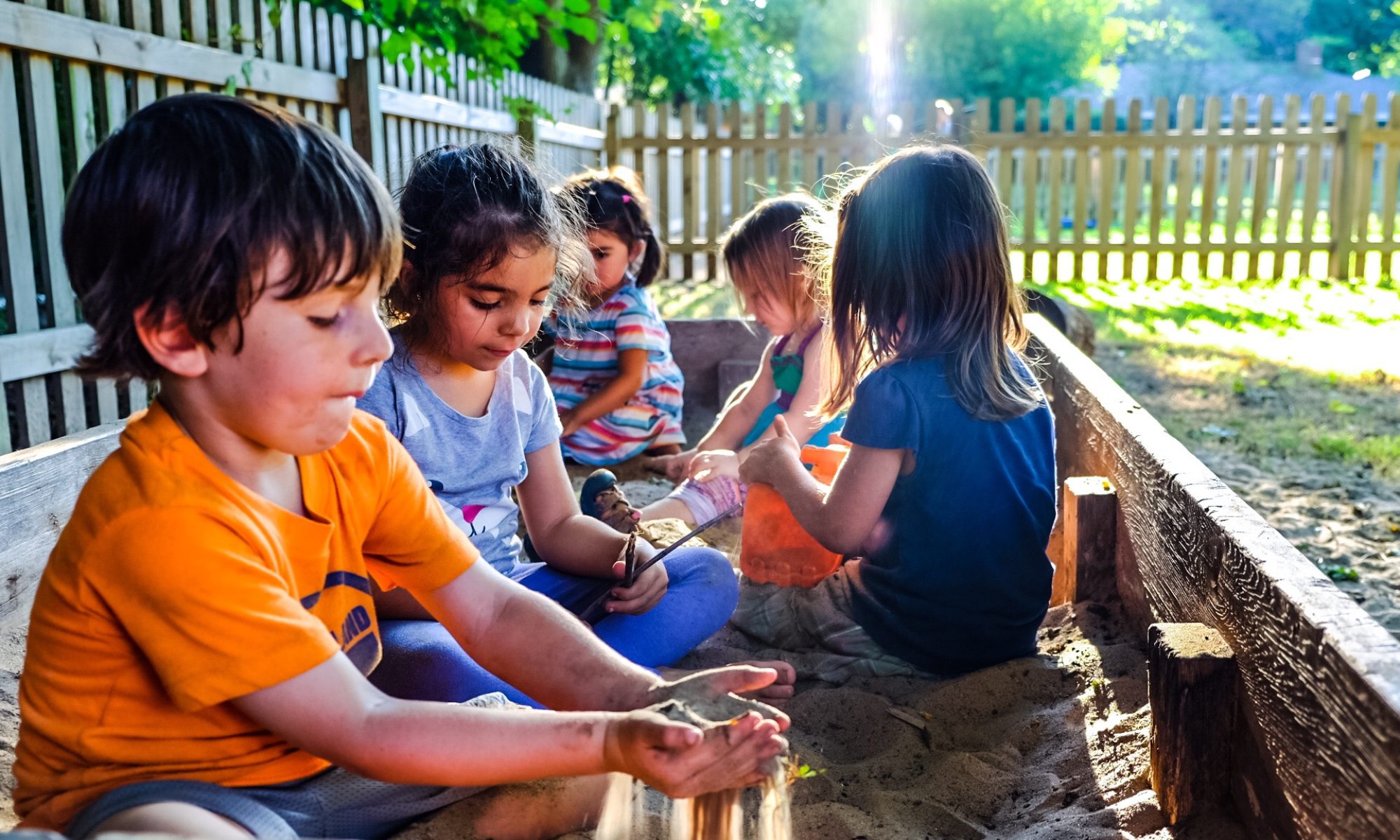Our Wondergarten and Kindergarten programs are for children three-and-a-half to six years old. A child’s readiness for either of these curricula is determined by several factors, including but not limited to toileting proficiency, ability to sit still for short periods, and willingness to participate. Kindergarten readiness is determined on a case-by-case basis by the kindergarten teacher.
Alongside outdoor play and other elements within the general curriculum, Wondergarten and Kindergarten children are introduced to arts and crafts. Our crafts are made lovingly with natural materials such as cotton, wool, wood, beeswax, and river clay. These crafts typically follow a seasonal rotation, many made for upcoming festivals such as dragon eggs for Michaelmas or flower baskets for May Day. All arts and crafts are endeavors of beauty and meaning. Wet-on-wet watercolor painting allows children to explore color and to carefully work with art tools. Hand-sewn gnomes and animals challenge fine motor skills and become well-loved toys.
Wondergarten children are introduced to these arts and crafts at a time in which they immersed in a rich fantasy life that shows through their work and is considered in our teaching methods. Watercolor painting, for example, is demonstrated through story and song, as opposed to direct instruction. Kindergarteners seeking to explore their own ideas through practical and artistic work are met with more challenging crafts that refine dexterity and motor control. This fine tuning of motor control has a direct effect on the level of brain development necessary for the academic schooling they will experience in their coming years.
Additionally, the children are involved in many aspects of our household economy, like bread baking, cleaning, and gardening. From mixing the dough ingredients to shaping the rolls, the children love to be included in this important task. Tasks like folding laundry, chopping vegetables, cleaning and polishing toys, and mopping the floor are given to the older kindergarten children. Everyone loves being a part of our garden, and children are included in planting, weeding and watering, as well as harvesting. Seasonally, a flower arrangement greets us at our lunch table, picked fresh by the children, of course.
We begin each morning with a verse, which sophisticates the child’s capacity for refined speech. We introduce seasonal circle time in Wondergarten as the child grows in her capacity for song and movement. Repetition and rhythm allows the child to become confident in the circle time words and gestures, and by the end of two weeks most know it by heart. This opportunity for movement also further ensures that children are supported in the process of integrating primitive movement patterns, whose absence is necessary for optimal brain development.
Oral storytelling with puppetry sparks the imagination, enlivens speech and develops memory. For the older kindergarten child finding a natural interest in words, storytelling serves as a valuable predecessor to formal instruction of reading and writing. For example, it teaches the child to “read” the tone, gesture, and emotion of a story essential in building comprehension.



